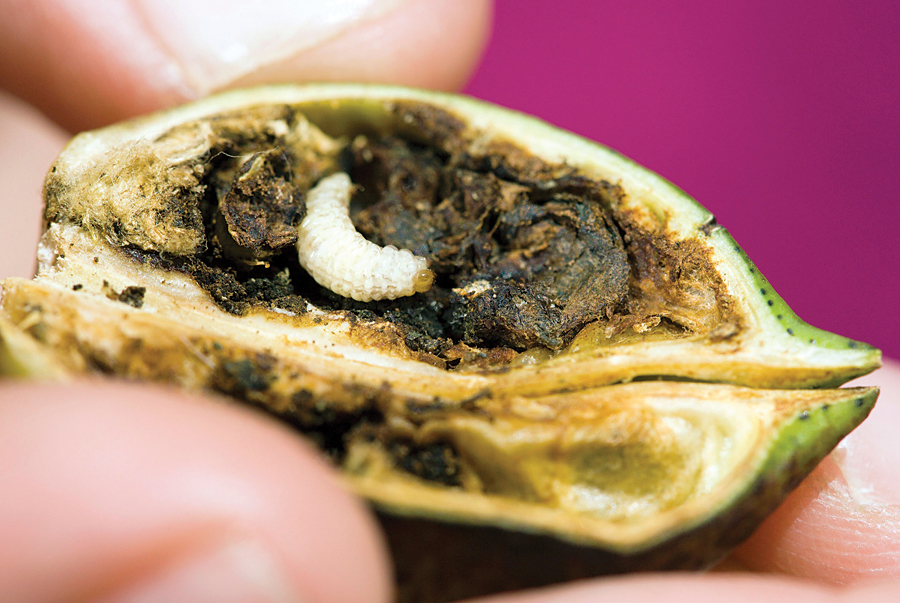Boll weevil is a small beetle that feeds inside the bolls (seed pods) of cotton plants. Native to Mexico and Central America, boll weevils spread north into Texas about 1890. Since then, they have spread into most cotton-growing areas of the United States. Boll weevils cause serious damage to United States cotton crops each year.
Brownish to black in color, the boll weevil is about 1/4 inch (6 millimeters) long. It is one of a group called snout beetles, because of the long beaks or snouts with which they feed. The boll weevil’s snout is about half as long as the rest of its body.
In winter, adult boll weevils live in trash in or near cotton fields. When buds appear on the cotton plants in spring, female boll weevils puncture them with their snouts. They lay eggs inside the buds, and the eggs soon hatch into wormlike grubs. The grubs feed inside the buds, usually causing them to fall off the plant. Continuing to feed, the grubs become adult boll weevils in about 21/2 or 3 weeks. They then eat their way out of the buds and attack other buds. Later in the season, they attack the bolls, where the females deposit more eggs. Several generations of boll weevils may be produced in a single season. Many insecticides are used to control boll weevils. Large fields are often sprayed with insecticides from airplanes. Scientists also have developed such techniques as baiting traps with chemical lures to control boll weevils.

The coming of the boll weevil to the United States caused great damage to cotton crops, yet it produced some good results, too. It forced many farmers to plant other crops, and to use some of their lands for raising cattle, hogs, and chickens. Many became more prosperous than when they raised only cotton.
